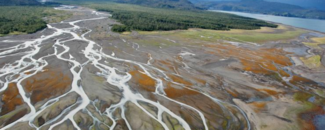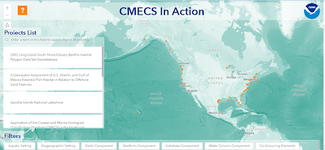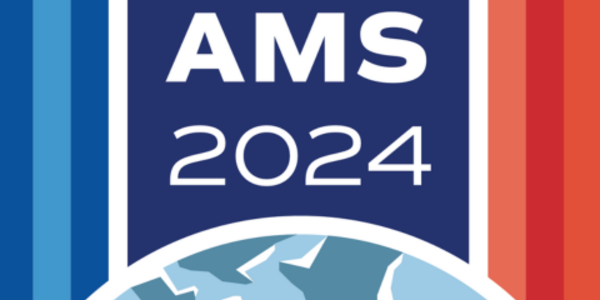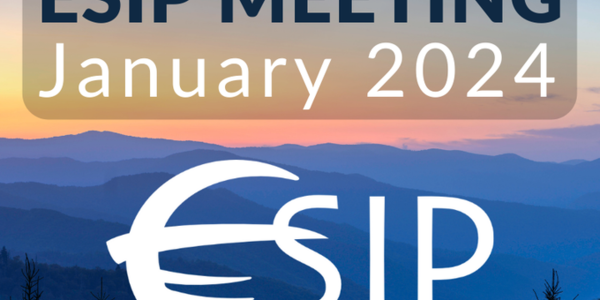
While it may not seem obvious, communication is a key element of data stewardship and the development of data products, like maps. In particular, a common vocabulary provides a consistent way to describe data so that there is no misunderstanding. For example, it is important that everyone uses the same definition of nearshore versus offshore or lagoon versus basin. Catalogs of defined terms allow different datasets to work seamlessly together.
The Coastal and Marine Ecological Classification Standard (CMECS) is one such catalog. CMECS is designed to provide a national standard for consistent descriptions of coastal and marine ecological features, allowing for the development of interoperable data products like maps from region to region. It offers a classification hierarchy as well as definitions of terms, enabling the categorization of data at any spatial scale.
CMECS was created with input from scientists and coastal managers. NOAA, along with the non-profit conservation organization NatureServe, the U.S. Environmental Protection Agency, and the U.S. Geological Survey, worked for over a decade to create and test the standard. The CMECS classification extends from the head of tide or the splash zone in the coastal zone to the depths of the oceans and Great Lakes. CMECS was created to enable consistency in the description of marine and coastal habitat types, and the sharing, use, and re-use of those data products.
CMECS In Action Web Map
Even in standardization, there is still some flexibility. Individual projects implement CMECS in different ways to meet specific mapping and research needs, resulting in various approaches to utilizing the framework. NCEI developed the CMECS In Action map viewer as a discovery tool to show the different ways that CMECS has been used by others. The map is a visual of the adoption of this important standard by projects across the country.
Hosted on the NOAA Geoplatform and accessible from the NCEI-hosted CMECS web page, the map shows approximate locations of a growing collection of projects with informational pop-ups listing the CMECS settings and components used, along with links to more information or data from the project's owner or source, if available. The web page also includes an accessible PDF containing all the map viewer’s information.
Keeping CMECS Relevant
Data volumes are increasing as new ecological data collection platforms are developed such as drones and autonomous underwater vehicles. Standardization of vocabulary is fundamental to being able to automate processing and analysis of large datasets through artificial intelligence and machine learning applications.
Standardization also supports FAIR Guiding Principles for scientific data management and stewardship by making data findable, accessible, interoperable, and reusable. Including CMECS terms in metadata records allows for more accurate search results, increasing the potential for discovery and reuse of data in accordance with FAIR data principles.
CMECS, which was endorsed by the Federal Geographic Data Committee (FGDC), builds on previous approaches from published national, regional, and local habitat classification procedures. CMECS was developed as a Dynamic Content Standard, allowing it to be updated periodically in response to improvements suggested by the scientific community. Properly-maintained, CMECS will remain relevant and useful as technologies and the state of knowledge about marine environments and organisms evolve.
NCEI staff participate in the CMECS Implementation Group, which promotes its use and oversees its maintenance. The CMECS Implementation Group has developed a Dynamic Standard Process to solicit and evaluate change proposals from the scientific community and revise the standard accordingly.




